Abstract
In Sri Lanka, Anopheles nigerrimus is resistant to a range of organophosphate and carbamate insecticides at both the larval and adult stages. Biochemical studies indicate that an alteration in acetylcholinesterase is the basis of resistance rather than increased metabolic breakdown of the insecticides. In contrast, A. culicifacies is resistant only to malathion and closely related compounds containing a carboxylate ester bond. Agricultural pesticides are the sole source of selection pressure for resistance in A. nigerrimus, while in A. culicifacies pressure arises predominantly from antimalarial spraying.
Full text
PDF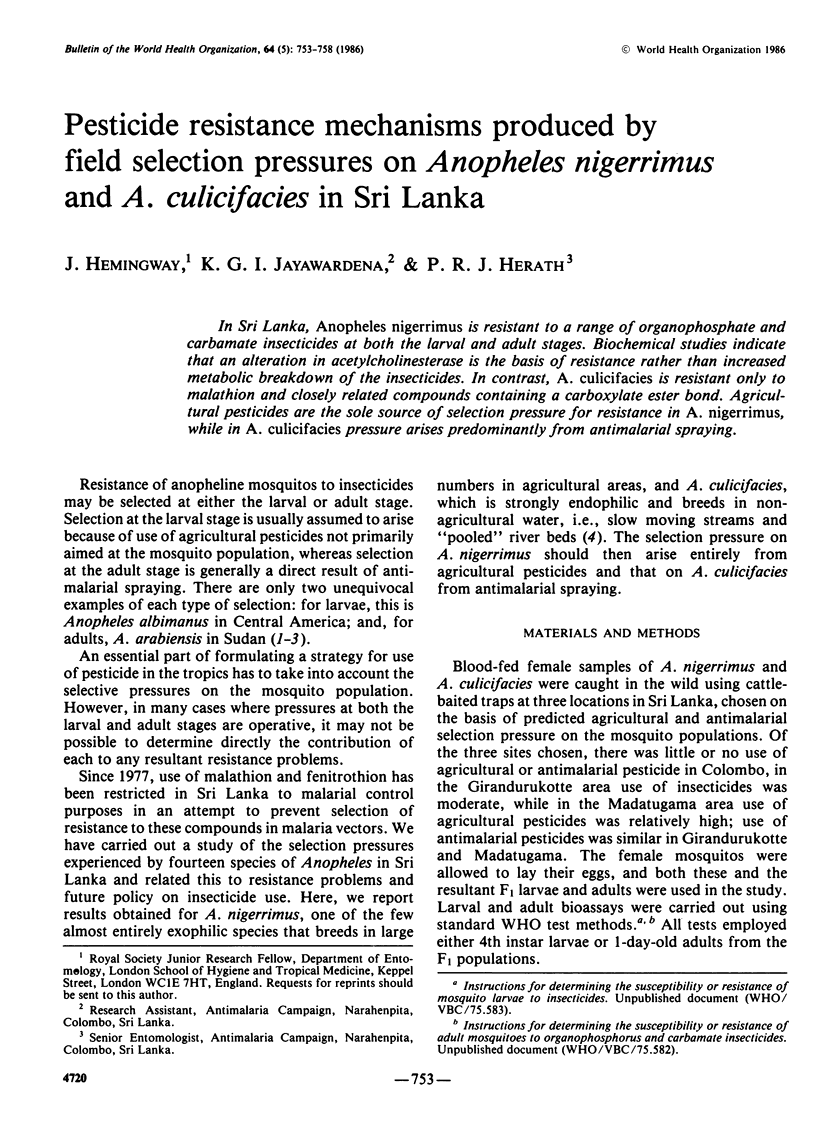
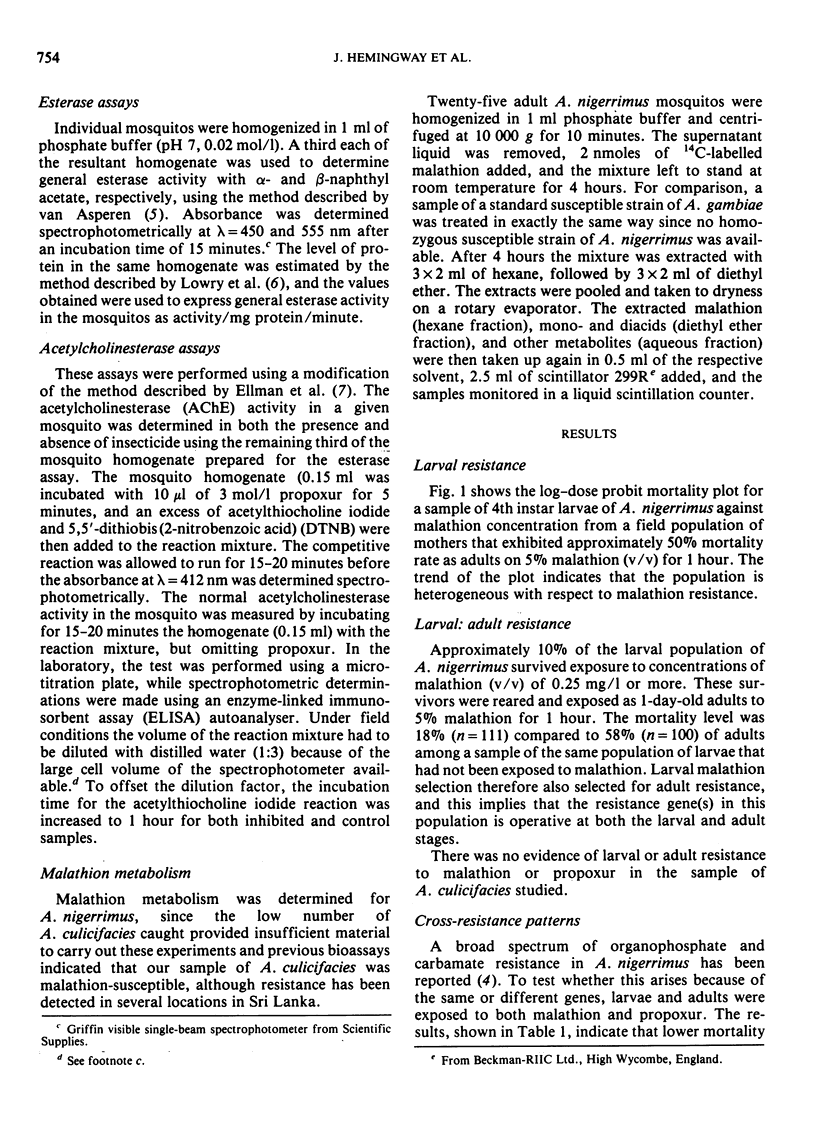
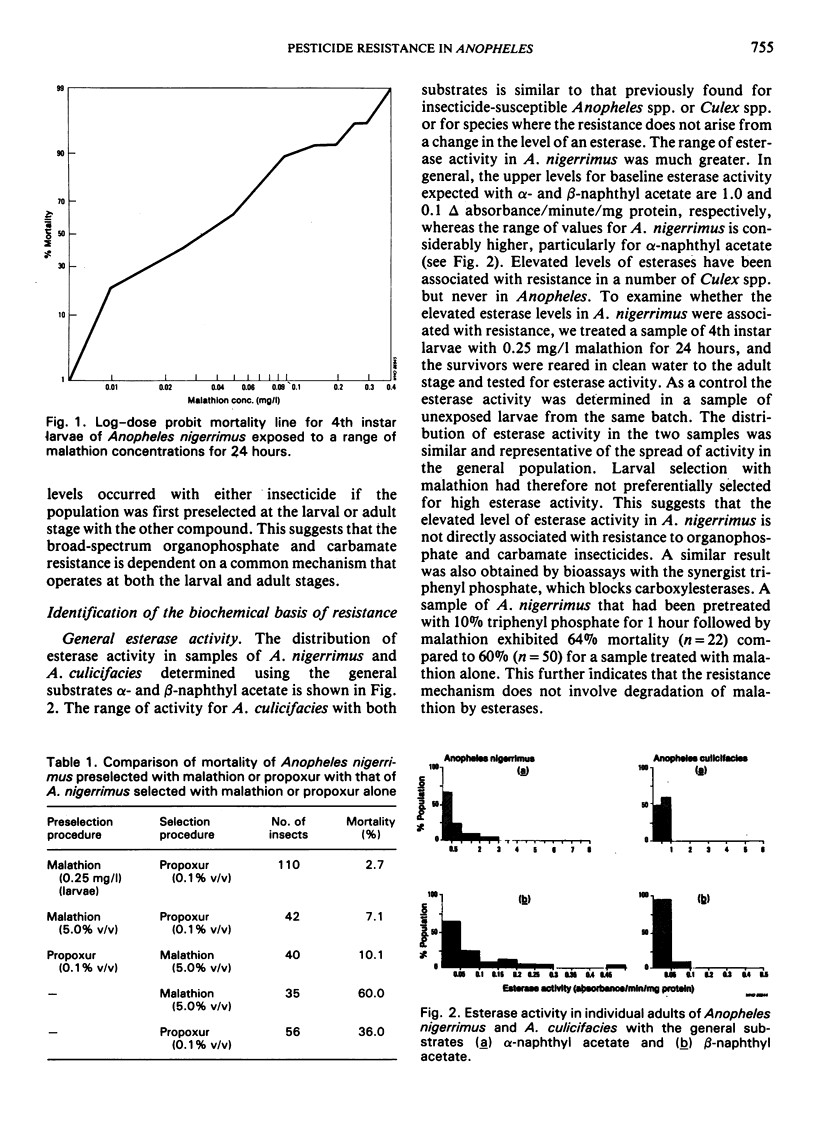
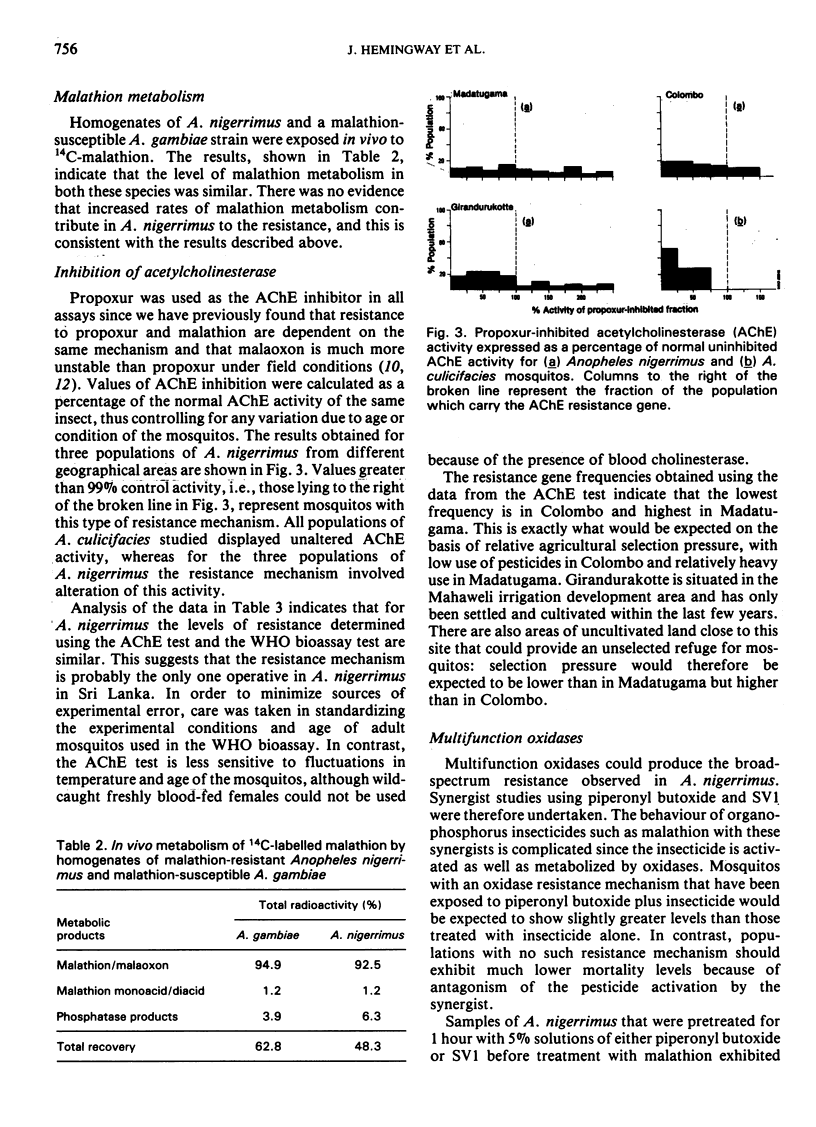
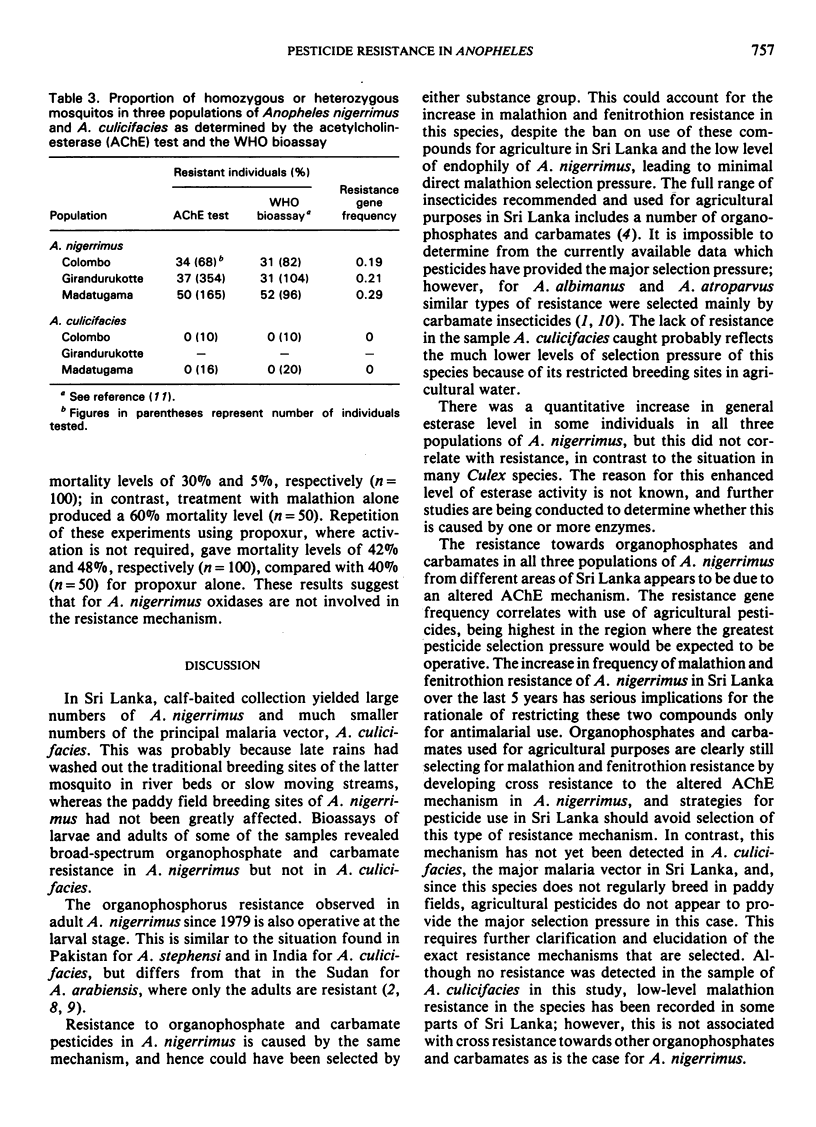
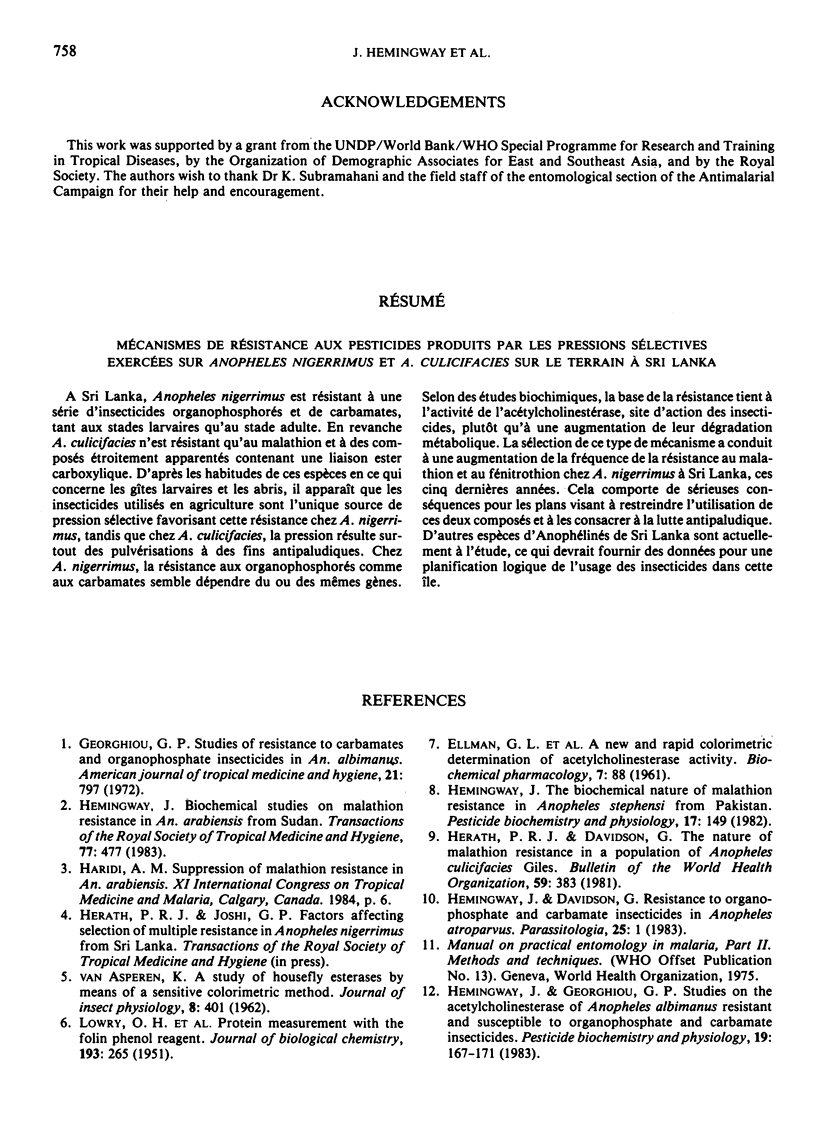
Selected References
These references are in PubMed. This may not be the complete list of references from this article.
- Georghiou G. P. Studies on resistance to carbamate and organophosphorus insecticides in Anopheles albimanus. Am J Trop Med Hyg. 1972 Sep;21(5):797–806. doi: 10.4269/ajtmh.1972.21.797. [DOI] [PubMed] [Google Scholar]
- Hemingway J. Biochemical studies on malathion resistance in Anopheles arabiensis from Sudan. Trans R Soc Trop Med Hyg. 1983;77(4):477–480. doi: 10.1016/0035-9203(83)90118-9. [DOI] [PubMed] [Google Scholar]
- Herath P. R., Davidson G. The nature of malathion resistance in a population of Anopheles culicifacies Giles. Bull World Health Organ. 1981;59(3):383–386. [PMC free article] [PubMed] [Google Scholar]
- LOWRY O. H., ROSEBROUGH N. J., FARR A. L., RANDALL R. J. Protein measurement with the Folin phenol reagent. J Biol Chem. 1951 Nov;193(1):265–275. [PubMed] [Google Scholar]


